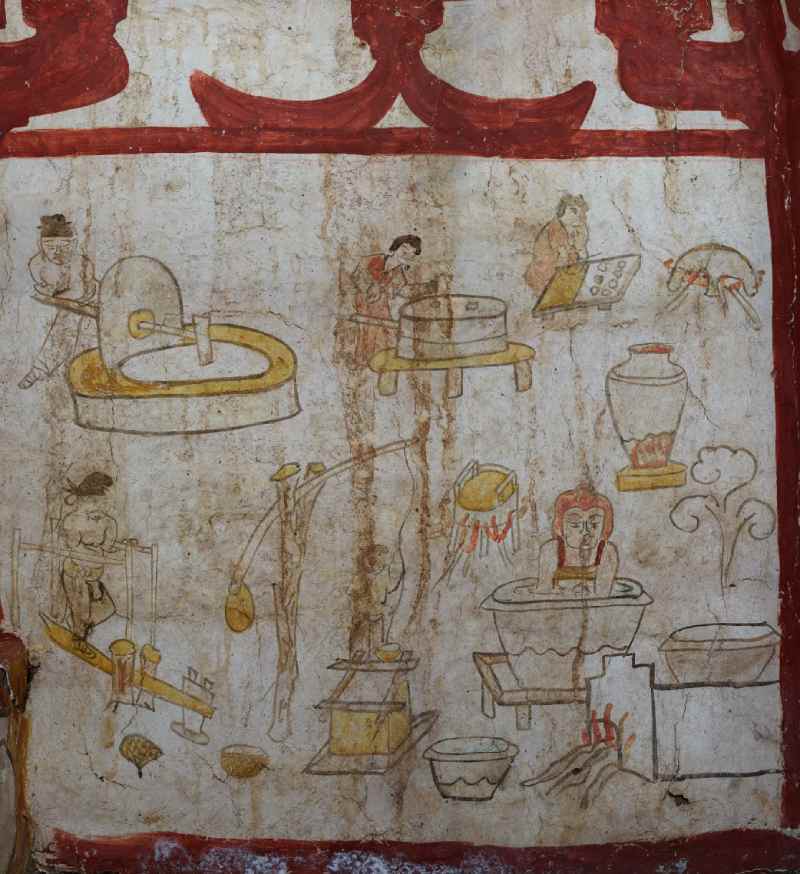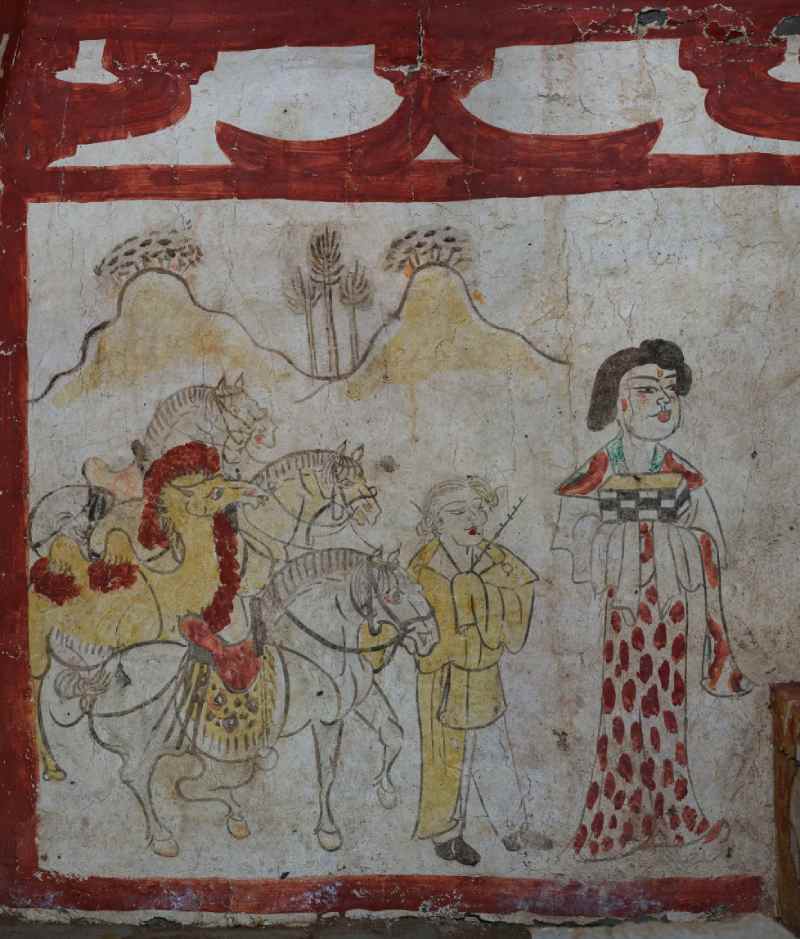Chinese archaeologists have unearthed a small but richly decorated tomb on a mountain outside Taiyuan, the capital of northern Shanxi province.
The tomb dates back nearly 1,200 years, from the Tang Dynasty (618-907 AD) and is full of surprises.
The Shanxi Provincial Institute of Archeology first discovered the tomb during a road construction survey in 2018. But according to Xinhua News Agency, they only recently announced their discovery.
A tombstone records that its owner died at home in the 24th year of Kaiyuan (AD 736) at the age of 63. His wife, Guo, was buried there the same year.
Archaeologists found an extremely well-preserved chamber made of light-colored bricks.
Red, yellow and orange cover the whitewashed walls and ceiling. And amidst it all is the crude stone coffin bed on which it is believed the couple lay.
But the raw, clear work of art has attracted the attention of researchers. It does not tell the story of great battles or successful hunts. It also does not show the luxury and splendor of the royal court.
Instead, the murals show them working hard under the supervision of divine beasts and trading with a "Westerner".
Among the 12 equally sized red-bordered panels, many appear to show the same Han man, based on the consistency of his appearance and clothing.
These may be different stages in the life and career of the owner of the unnamed tomb.
One panel in particular seems to show both a husband and wife engrossed in making rice noodles.
They were seen doing everything from carrying water, threshing rice, using stones to crush, grind and shape into dough balls.

Chinese archaeologists say the tomb's strong outlines, simple shading and effective two-dimensional design set the tomb's artwork apart from other works of the time.
One of the boldest panels depicts a woman wearing an ornate, multicolored dress and holding a checkered box.
Behind her was a blond man holding a whip, leading three saddled horses and a two-humped camel.

Chinese archaeologists believe this shows that the Chinese came into contact with distant "Western people" via the Silk Road, which was active for nearly 800 years before the tomb was drawn.
"Based on his facial features and clothing style, we can identify him as a 'Western man', possibly a Sogdian from Central Asia," Professor Victor Xiong told LiveScience.
The Sogdians lived in what is now Tajikistan and Uzbekistan - a hub in the Silk Road network connecting Asia and Europe.
SCMP newspaper quoted Mr. Long Chan - Director of the Institute of Tan Duong Ancient Citadel Archeology - saying that this unique art style is very similar to the style found in the tomb of Prince Vuong Tham Tri (later traced). titled Man Thai To - the founding monarch of the Man state during the Five Dynasties and Ten Kingdoms period - after his death).








